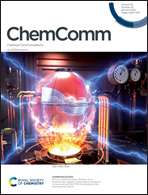Metal–organic cages against toxic chemicals and pollutants
Abstract
The continuous release of toxic chemicals and pollutants into the atmosphere and natural waters threatens, directly and indirectly, human health, the sustainability of the planet, and the future of society. Materials capable of capturing or chemically inactivating hazardous substances, which are harmful to humans and the environment, are critical in the modern age. Metal–organic cages (MOCs) show great promise as materials against harmful agents both in solution and in solid state. This Highlight features examples of MOCs that selectively encapsulate, adsorb, or remove from a medium noxious gases, toxic organophosphorus compounds, water pollutant oxoanions, and some emerging organic contaminants. Remarkably, the toxicity of interacting contaminants may be lowered by MOCs as well. Specific cases pertaining to the use of these cages for the chemical degradation of some harmful substances are presented. This Highlight thus aims to provide an overview of the possibilities of MOCs in this area and new methodological insights into their operation for enhancing their activity and the engineering of further remediation applications.



 Please wait while we load your content...
Please wait while we load your content...